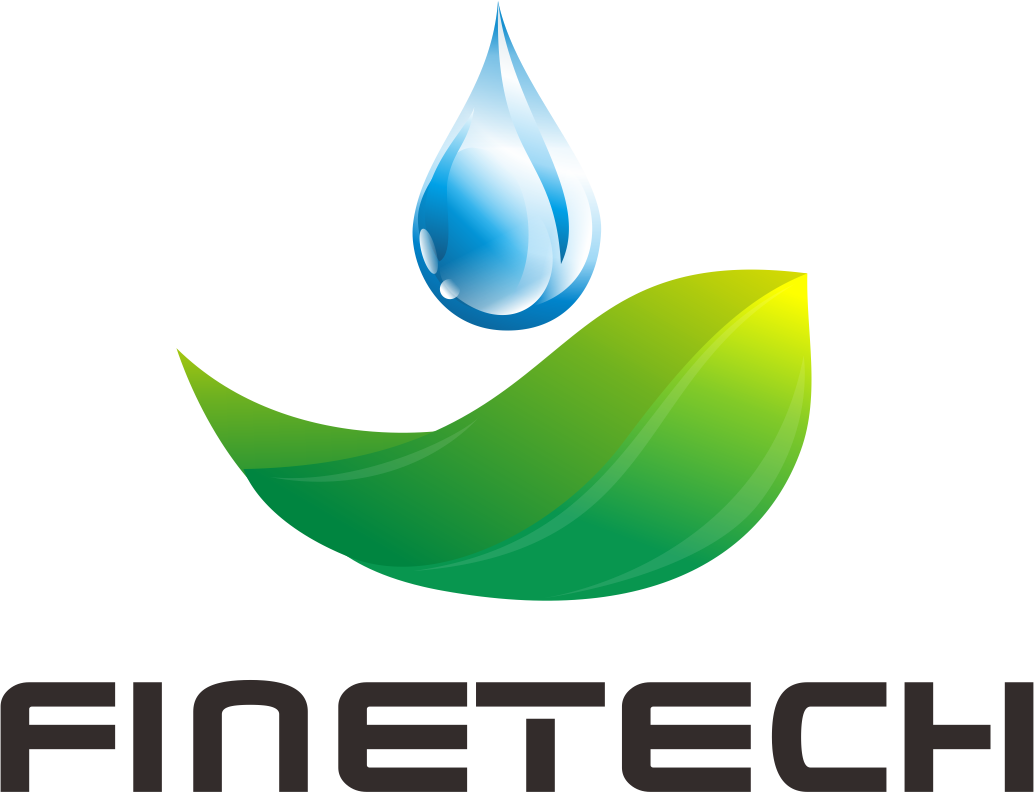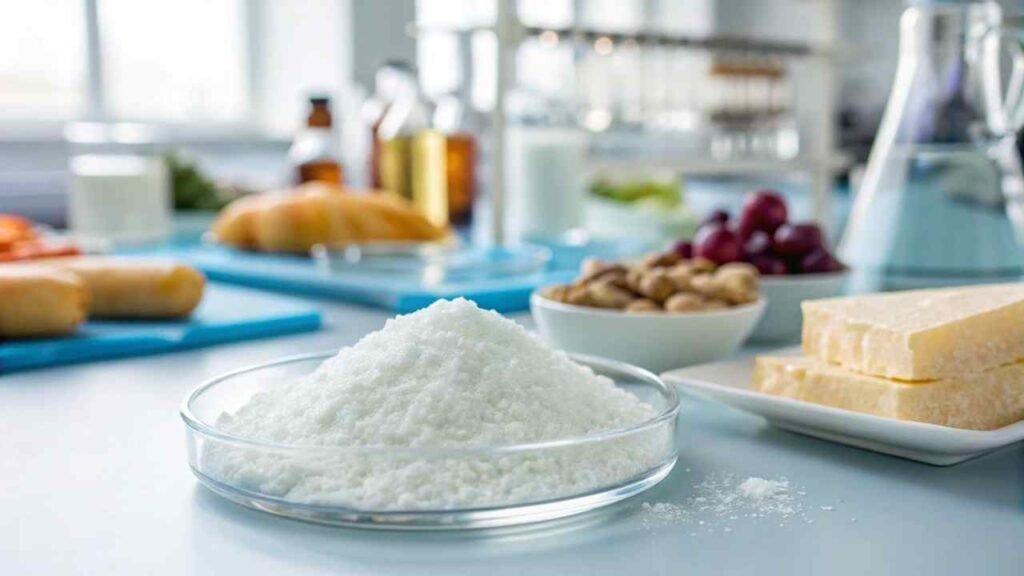Using Potassium Sorbate but want better results? Confused by its behavior in complex food systems? Let's unlock advanced insights for smarter formulation and purchasing decisions.
Potassium Sorbate works best below pH 6.0, rarely harms vitamins/minerals. Water activity (Aw), processing heat, and fat content greatly affect its power. HPLC accurately checks its levels.
Knowing Potassium Sorbate's nuances means better products and less spoilage. This is for buyers ready to go beyond basics.
Does Potassium Sorbate interact with vitamins or minerals in fortified foods?
Adding vitamins to foods? Worried Potassium Sorbate might affect them? Let's quickly check for interactions.
Potassium Sorbate generally has minimal negative impact on most vitamins (A, D, E, B-group) or minerals at normal food use levels and pH. Indirect effects are minor.
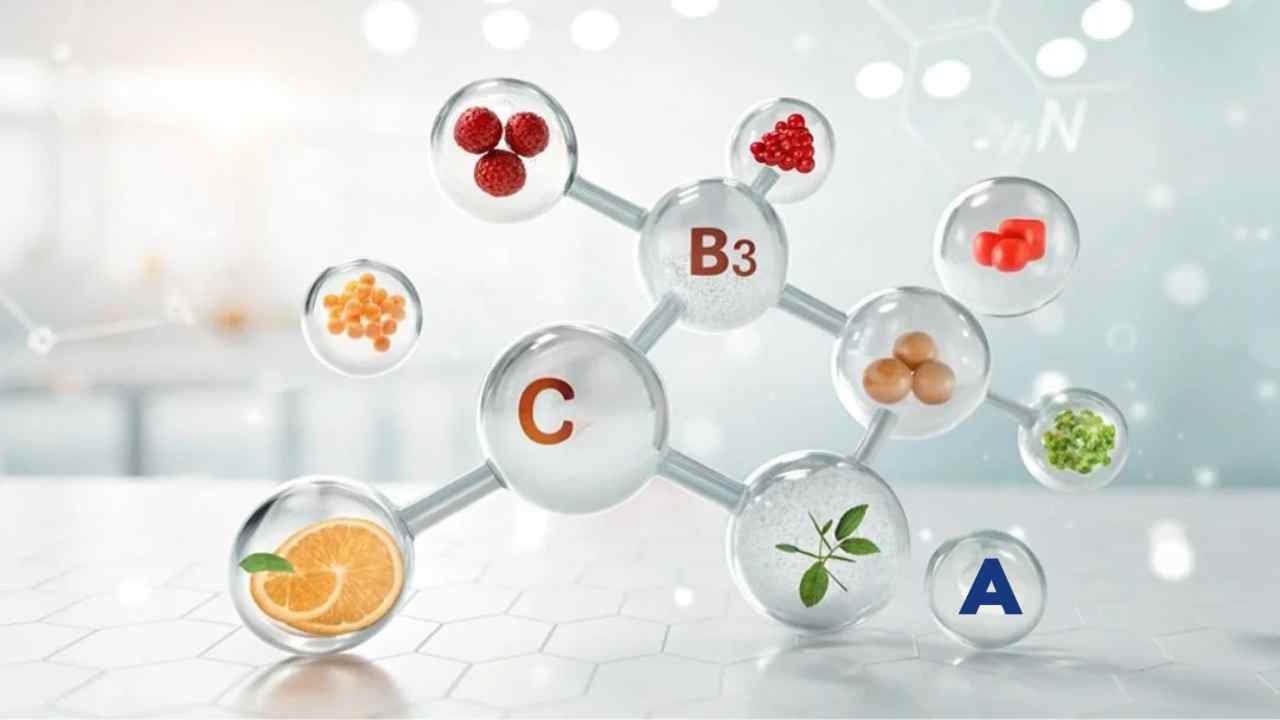
Potassium Sorbate's main job is fighting microbes, not reacting with vitamins. It's usually compatible with common vitamins (A, D, E, B-vitamins, C) and minerals (calcium, iron).
Key Points:
- Vitamin C (Ascorbic Acid): Can be sensitive to oxidation in general; sorbate isn't a primary cause of loss but ensure protective measures (antioxidants, chelators) if Vitamin C stability is a concern.
- pH: Sorbate works best at low pH (<6.0). This pH might affect some vitamins' stability (e.g., thiamin is less stable at higher pH), but this is an indirect effect of the system pH, not sorbate itself.
- Low Usage Levels1: Sorbate is used at very low levels (0.025-0.1%), limiting potential reactions.
Overall, the food's own environment (pH, oxygen, light, heat) and the inherent stability of the vitamins play a much bigger role than Potassium Sorbate. Stability tests are always good for fortified foods.
Nutrient Interaction Summary:
| Nutrient | Potassium Sorbate Interaction | Note |
|---|---|---|
| Most Vitamins | Generally Low/Negligible | System pH and stability are key. |
| Vitamin C | Minor potential (oxidation) | Protect Vitamin C generally. |
| Minerals | Generally Low/Negligible | Iron can catalyze oxidation. |
How does a product's water activity (Aw) influence Potassium Sorbate's effectiveness?
Making foods that aren't very wet or very dry? Does Potassium Sorbate still work well then? Let's see how water activity (Aw) matters.
Potassium Sorbate's effectiveness is significantly enhanced at lower water activity (Aw) levels. Reduced Aw stresses microbes, making them more susceptible to sorbic acid's antimicrobial action.

Water activity (Aw) is about "available" water for microbes. Low Aw (0 meaning bone dry, 1.0 pure water) makes it hard for microbes to grow. This stress works hand-in-hand with Potassium Sorbate.
- Synergy: Microbes stressed by low Aw are more vulnerable to sorbic acid. Less sorbate might be needed.
- Intermediate Moisture Foods (IMFs)2: (Aw 0.70-0.90, e.g., dried fruits, jams, some baked goods). Potassium Sorbate is very effective here, targeting hardy yeasts and molds.
- High Moisture Foods3: (Aw > 0.90, e.g., drinks). Sorbate works but might need higher doses or other hurdles (low pH, cold).
Aw & Sorbate Efficacy:
| Aw Range | Microbial Risk | Sorbate Effectiveness |
|---|---|---|
| > 0.90 (High) | High | Works, may need help (pH, temp) |
| 0.70-0.90 (Mid) | Moderate | Very Effective / Synergistic |
| < 0.70 (Low) | Low | Less critical, surface protection? |
Lowering Aw boosts Potassium Sorbate's power.
Can specific processing techniques enhance or diminish Potassium Sorbate's efficacy?
How does cooking or mixing affect Potassium Sorbate? Can processing help or hurt its performance? Let's examine processing impacts.
Strong heat (like retorting) can reduce Potassium Sorbate levels. Good mixing is key for even protection. Its power relies on low pH, so pH control during processing is vital.
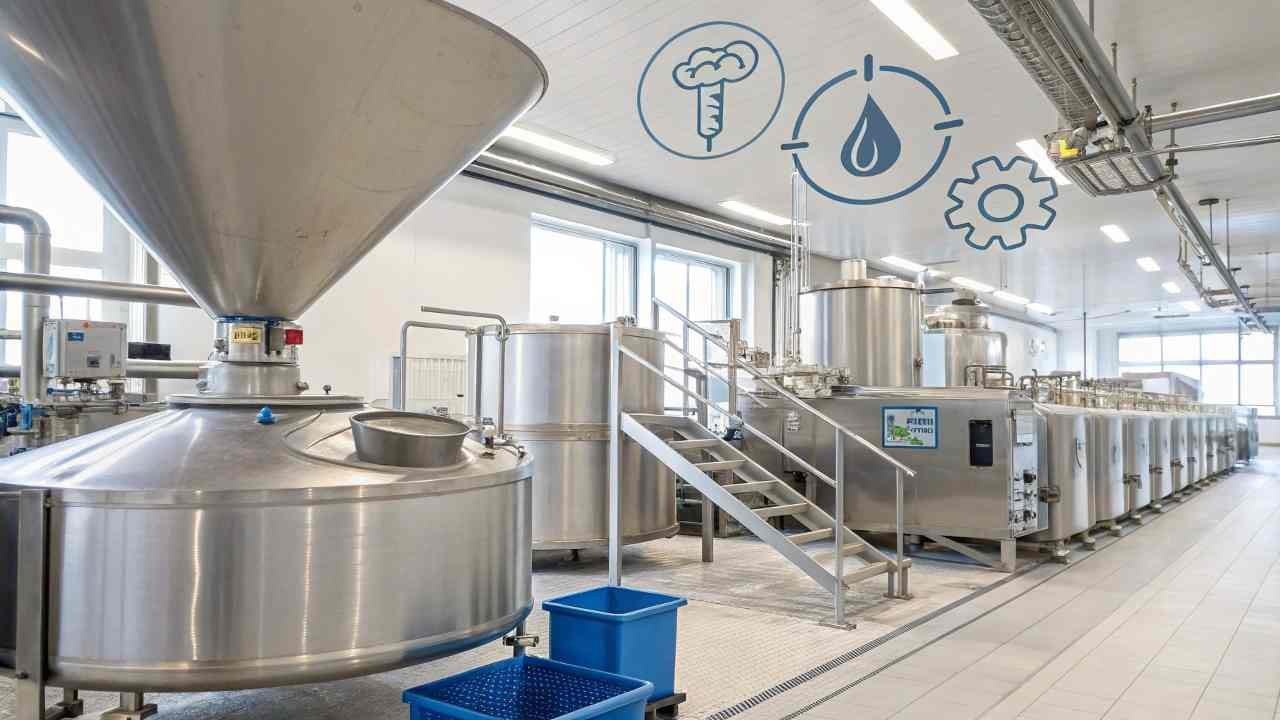
How you make your food affects how well Potassium Sorbate works.
- Heat: Very high heat (retorting) can cause some loss of sorbic acid. Milder heat (pasteurization) is fine and even helps by reducing initial microbes.
- pH Control4: Sorbate needs low pH (ideally < 6.0, best around 4.0-5.5) to be active sorbic acid. Ensure your final product pH is in this range. Add acidulants (e.g., citric acid) if needed.
- Mixing: Potassium Sorbate must be fully dissolved and evenly mixed in the product to work everywhere. Poor mixing means unprotected spots.
Processing Factor Summary:
| Technique | Impact on Sorbate Efficacy | Tip |
|---|---|---|
| High Heat | Potential Loss | Account for it, add later if possible. |
| pH Adjust | Crucial (needs low pH) | Ensure final pH < 6.0. |
| Mixing | Uneven distribution = failure | Mix thoroughly. |
Optimize processing for best sorbate performance.
Can Potassium Sorbate be used effectively in high-fat or emulsion-based food products?
Making creamy dressings or mayo? Will Potassium Sorbate work in these high-fat foods? Let's check its performance in emulsions.
Yes, Potassium Sorbate works in high-fat/emulsion foods. But it must be in the water phase at the right (low) pH. Its tendency to move between oil and water needs management.
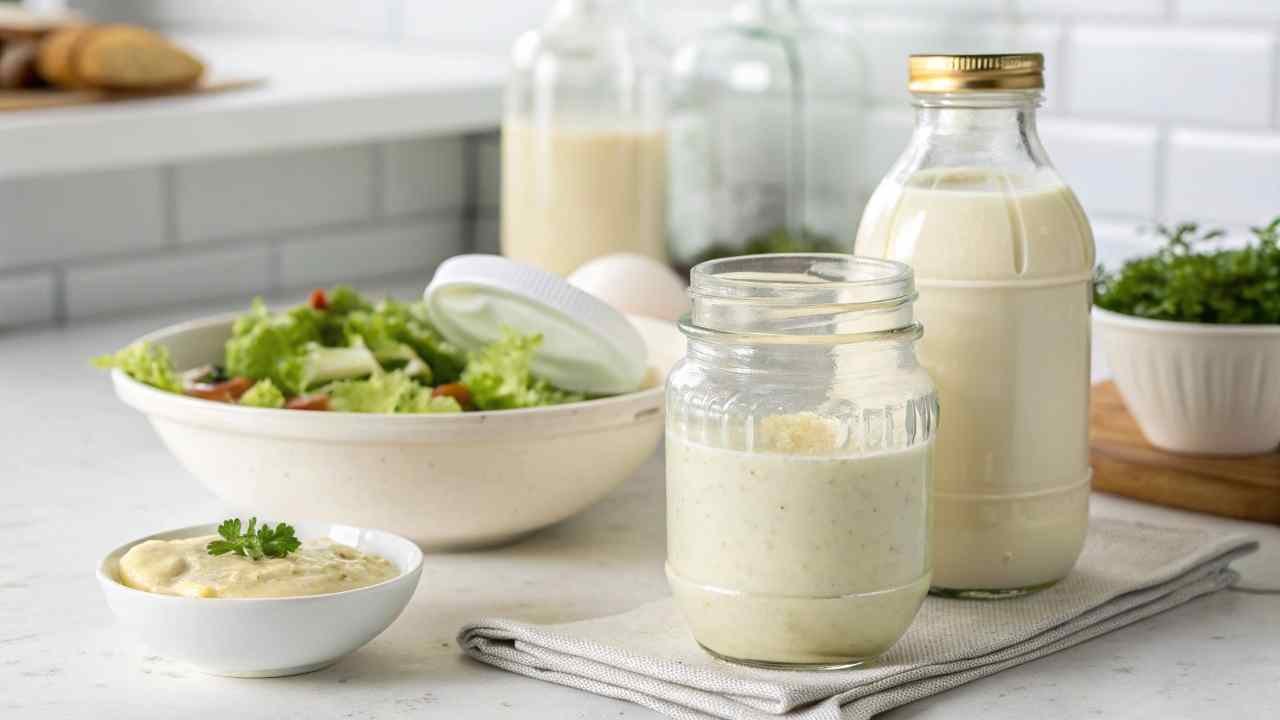
High-fat foods like mayo or dressings are tricky. Microbes grow in the water part, so sorbate needs to be active there. Sorbic acid (active form) can partly dissolve in oil.
Key for Emulsions:
- Water Phase is Key5: Sorbic acid must be in the water phase at sufficient concentration.
- Partitioning: Sorbic acid splits between oil and water. If too much goes to oil, water phase concentration drops.
- Water Phase pH: Must be acidic (<6.0, ideally 3.5-5.0) to have active sorbic acid. Many emulsions are acidified.
- Dissolution: Dissolve Potassium Sorbate in the water part before making the emulsion.
- Oil:Water Ratio: High oil can pull more sorbic acid. Dosage may need optimizing.
Emulsion Factor Summary:
| Factor | How it Affects Sorbate | Tip for Success |
|---|---|---|
| Partitioning | Sorbic acid moves to oil/water | Keep enough active form in water. |
| Water Phase pH | Controls active sorbic acid | Keep water phase pH acidic. |
| Dissolution | Critical for even spread | Dissolve in water first. |
Careful formulation makes sorbate effective in high-fat systems.
What analytical methods verify Potassium Sorbate concentration in finished products?
Need to confirm Potassium Sorbate levels in your food? How do labs measure it? Let's look at the main testing methods.
High-Performance Liquid Chromatography (HPLC) is the most accurate and common method. UV Spectrophotometry is simpler but less specific. Titration is rarely used for food due to interferences.

Checking sorbate levels ensures compliance, quality, and helps troubleshoot.
- HPLC (with UV detector): Best method. Separates sorbic acid from other food parts and measures it accurately. Good for regulatory work and quality control.
- UV Spectrophotometry: Quicker, cheaper. Measures UV light absorbed by sorbic acid. But other things in food can absorb UV too, causing errors. Better for simple foods or as a quick check.
- Titration: Measures total acidity. Not specific enough for sorbate in most foods, as foods have other acids.
For reliable results, especially for official purposes, HPLC is the way to go. A Certificate of Analysis (CoA) from FINETECH confirms the purity of the raw material.
Analysis Method Comparison:
| Method | Specificity | Accuracy | Common Use |
|---|---|---|---|
| HPLC-UV | High | High | Preferred, Regulatory |
| UV Spec | Low-Moderate | Moderate | Screening, Simple Foods |
| Titration | Very Low | Low | Not for complex foods |
Conclusion
Advanced Potassium Sorbate use means leveraging low pH and Aw, knowing it's vitamin-friendly, managing processing effects, ensuring it works in fats/emulsions, and using HPLC for verification.
-
Discovering the advantages of low usage levels of preservatives can inform better food safety practices. ↩
-
Learn about Intermediate Moisture Foods and their importance in food safety and preservation techniques. ↩
-
Discover the challenges and methods for preserving High Moisture Foods effectively. ↩
-
Exploring pH control's impact on food preservation can help you optimize your recipes for better results. ↩
-
Learning about the significance of the water phase in emulsions can improve your understanding of food science and formulation. ↩
